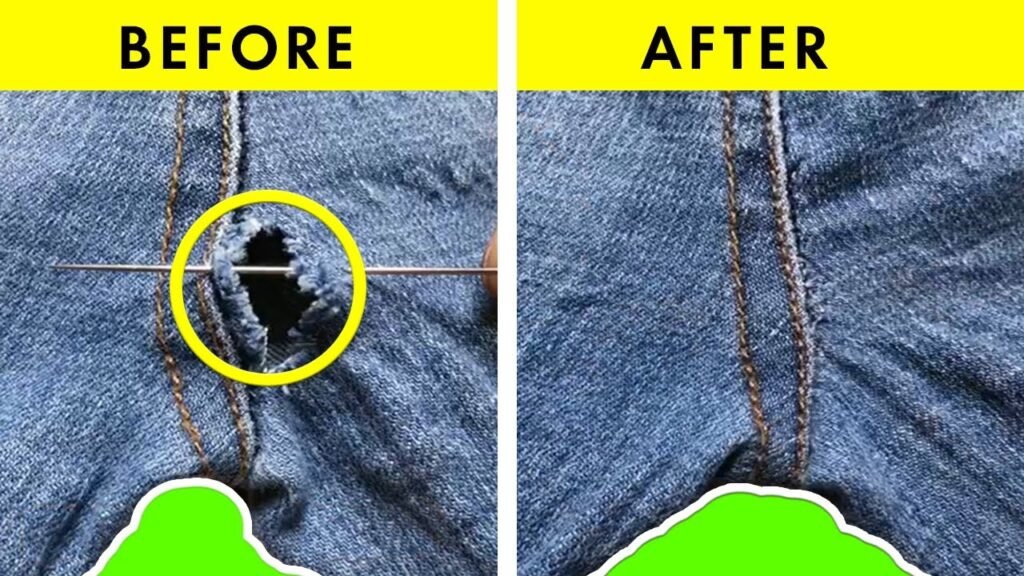Denim Fabrics: Latest Developments in Denim Fabrics in 2024
Denim fabrics are the sturdy cotton twill fabrics typically used to make jeans, jackets, and other clothing items. It is characterized by its unique diagonal ribbing or “twill” pattern, which is created by weaving the fabric in a way that produces diagonal lines or ridges. Denim is highly durable and known for its longevity, making it a popular choice for casual and workwear garments. In this article, we will discuss some of the latest developments in denim fabrics. New denim fabrics are named and categorized as follows … 1. Stretch Denim Stretch denim is a type of denim fabric that incorporates a small amount of elastane or spandex into its composition. This addition of stretch fibers, usually about 2% to 4% of the total fabric content, provides the denim with a certain degree of elasticity and flexibility. The stretchy nature of this fabric offers a more comfortable and forgiving fit, making it popular in modern jeans and other clothing items. Here are some key characteristics and advantages of stretch denim: Comfort: The elastane or spandex fibers in stretch denim allow the fabric to stretch and recover, providing a greater range of motion and enhanced comfort compared to traditional rigid denim. Flexibility: The added stretch makes the fabric more flexible, which is particularly beneficial in jeans and other garments where freedom of movement is desired. Contouring: Stretch denim tends to conform to the body’s shape, resulting in a more flattering fit that hugs the curves without feeling overly tight. Shape Retention: Despite its stretch, this fabric generally maintains its shape well over time, helping to prevent sagging or bagging. Reduced Wrinkling: The inclusion of stretch fibers can minimize the appearance of wrinkles and creases that may form during wear. Versatility: Stretch denim can be used for various clothing styles, including jeans, jackets, skirts, and more, allowing for a comfortable and fashionable look in different settings. It’s important to note that while stretch denim offers increased comfort and mobility, it may not be as durable as traditional 100% cotton denim, especially in the case of heavy-duty applications or workwear. The level of stretch can also vary between different brands and styles, so it’s a good idea to try on different garments to find the stretch level that suits your preferences and needs. 2. Recycled Denim Recycled denim refers to denim fabric or denim clothing that is made from recycled materials. Instead of using newly produced cotton fibers, recycled denim utilizes old or discarded denim fabric to create new products, contributing to a more sustainable and eco-friendly approach to fashion. The process of recycling denim typically involves the following steps: Collection: Old or discarded denim garments are collected through various means, such as donations, recycling programs, or textile waste recovery initiatives. Sorting: The collected denim is sorted based on color, type, and condition. This step helps ensure that the recycled fibers are consistent with color and quality. Shredding: The sorted denim is shredded into small pieces or fibers to break it down into manageable components for the recycling process. Blending: The shredded denim fibers may be blended with other recycled materials, such as cotton or polyester, to achieve the desired texture and properties. Spinning: The blended fibers are then spun into yarns, which can be used for weaving or knitting new denim fabrics. Weaving/Knitting: The recycled denim yarns are woven or knitted into new denim fabric, which can then be used to make various clothing items, such as jeans, jackets, shirts, and more. Recycled denim offers several environmental benefits: Reduced Resource Consumption: By using recycled denim, the demand for new cotton production is reduced, conserving water, energy, and other resources associated with traditional denim manufacturing. Textile Waste Reduction: Recycling old denim garments helps divert them from ending up in landfills, reducing the amount of textile waste and its environmental impact. Lower Carbon Footprint: The recycling process generally requires less energy and emits fewer greenhouse gases compared to producing new denim from raw materials. Conservation of Land and Water: With less demand for new cotton cultivation, land and water resources can be conserved, benefiting both the environment and local communities. Recycled denim is a part of the broader sustainable fashion movement, which aims to create a more environmentally friendly and socially responsible fashion industry. It offers consumers an opportunity to make more conscious choices and support brands that prioritize eco-friendly practices. 3. Organic Denim Organic denim is a type of denim fabric that is made from cotton produced using organic farming practices. Unlike conventional cotton, which is often grown using synthetic pesticides, genetically modified organisms (GMOs), and chemical fertilizers, organic cotton is cultivated without the use of these harmful substances. Instead, organic cotton farming relies on natural and sustainable methods to protect the environment and promote biodiversity. Here are some key features and benefits of organic denim: Organic Farming: Organic cotton used for making organic denim is grown using environmentally friendly and sustainable agricultural practices. These methods include crop rotation, natural pest control, composting, and avoiding the use of synthetic chemicals. Non-GMO: Organic cotton is non-genetically modified, ensuring that the crops are natural and not genetically engineered. Reduced Environmental Impact: By eliminating synthetic pesticides and chemical fertilizers, organic cotton farming helps protect soil health, water quality, and biodiversity. It also significantly reduces the risk of harm to farmers and nearby communities. Healthier for Farmers: Organic cotton farming is generally safer for farmers and workers who come into contact with the crops since they are not exposed to harmful chemicals. Eco-friendly Processing: The production of organic denim usually follows eco-friendly and chemical-free manufacturing processes, further reducing its environmental impact. Quality and Comfort: Organic denim is often praised for its softness, durability, and comfort, making it a desirable option for eco-conscious consumers. Global Certifications: To ensure the authenticity and credibility of organic cotton, there are various global certifications, such as GOTS (Global Organic Textile Standard) and OCS (Organic Content Standard), which provide guidelines and standards for organic textile production. Choosing organic denim over conventional denim
Denim Fabrics: Latest Developments in Denim Fabrics in 2024 Read More »





